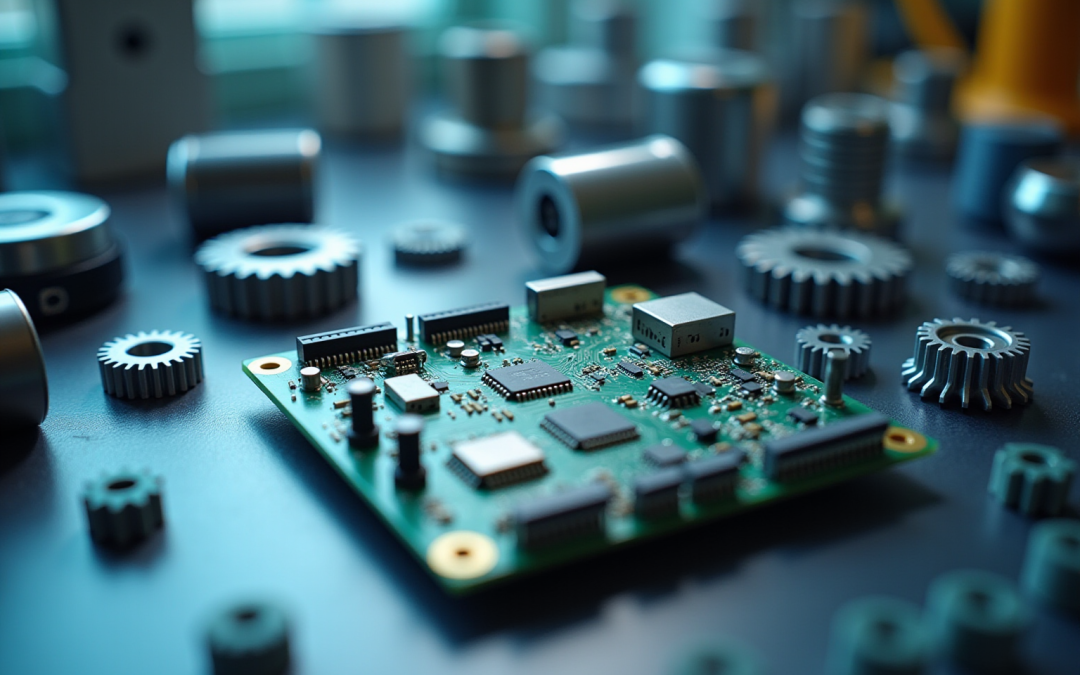Overview
This article delves into the significance of PWM (Pulse Width Modulation) motor controllers, emphasizing their critical features, historical evolution, and diverse applications. PWM motor controllers play a pivotal role in regulating the speed and torque of electric machines through precise pulse width adjustments. Over the decades, advancements in this technology have markedly improved precision and efficiency across various sectors, notably in robotics and automotive systems. Understanding these developments is essential for professionals seeking to leverage PWM technology in their respective fields.
Introduction
In the realm of modern engineering, Pulse Width Modulation (PWM) motor controllers emerge as crucial devices that not only enhance the performance of electric motors but also propel innovation across various industries. By precisely manipulating the width of digital signal pulses, these controllers offer exceptional regulation of motor speed and torque, rendering them indispensable in applications that span from robotics to automotive systems.
With the advancement of technology, PWM has evolved significantly, transitioning from a rudimentary motor control method to a sophisticated solution that seamlessly integrates digital processing and feedback mechanisms.
This article explores the core functionality, historical development, key features, and diverse applications of PWM motor controllers, illuminating their essential role in shaping the future of motor control technology.
Define PWM Motor Controllers and Their Core Functionality
Pulse Width Modulation (PWM) motor controllers represent a pivotal technology in the control of , adeptly managing both velocity and torque by adjusting the width of pulses within a digital signal. The core functionality of a lies in its ability to rapidly toggle the power supply on and off, creating a precise sequence of pulses. By varying the length of these pulses—known as the —through a [PWM motor controller](https://gagner-toomey.com/10-key-benefits-of-pwm-fans-for-electronics-engineers), the average power delivered to the device can be finely tuned, facilitating meticulous control over operational speed. This method proves particularly effective for , where the speed is directly proportional to the applied voltage. The widespread adoption of the PWM motor controller technology across diverse applications, from robotics to automotive systems, highlights its efficiency and simplicity in managing functional controls.
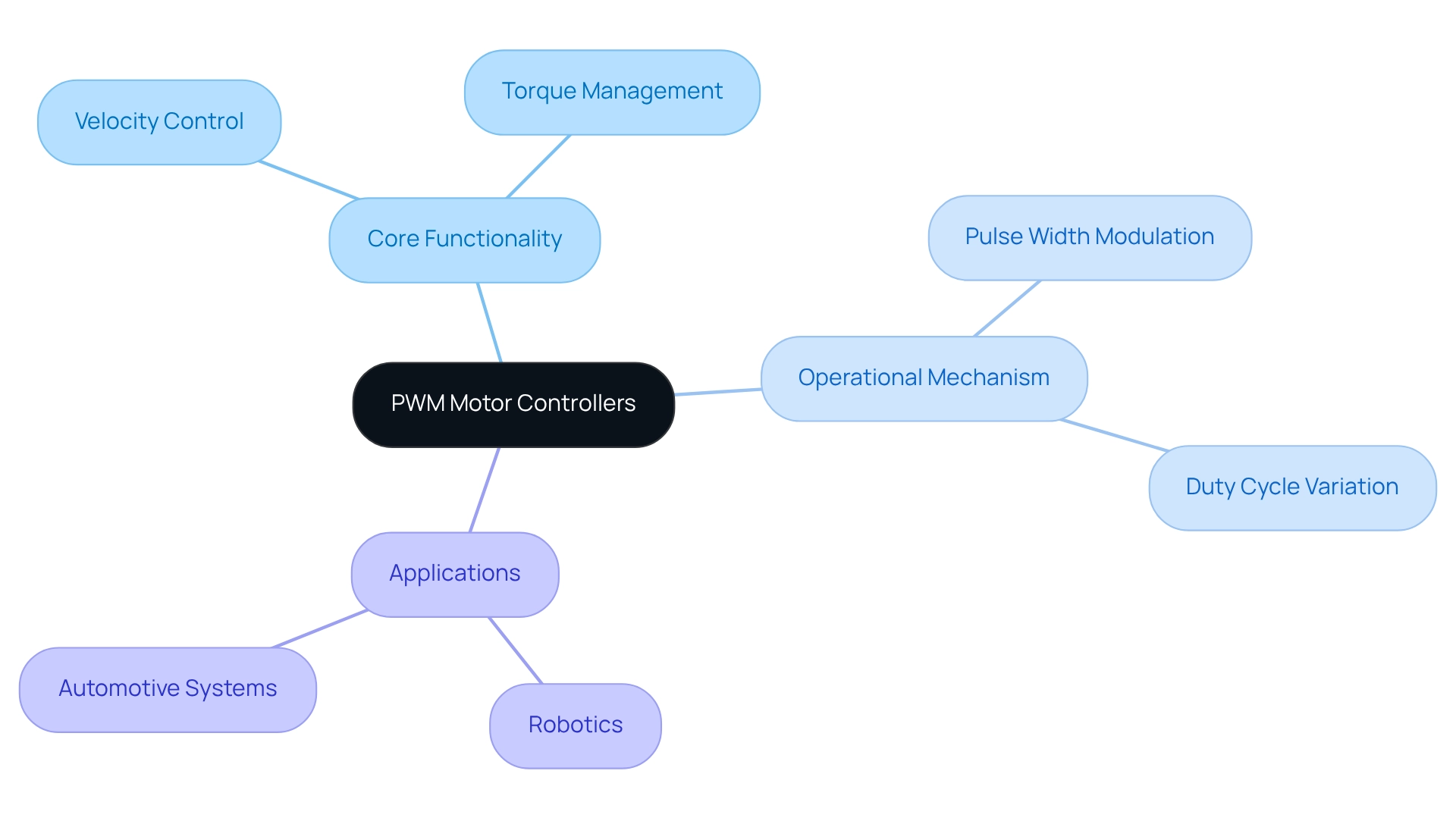
Trace the Evolution of PWM Technology in Motor Control
The evolution of dates back to the 1960s, when it emerged as a method for regulating the speed of electric machines. Initially confined to basic applications, PWM technology expanded in tandem with advancements in semiconductor technology. The 1970s saw the introduction of integrated circuits, which paved the way for more sophisticated PWM designs, allowing for . By the 1980s and 1990s, the had established itself as the standard for engine control in various sectors, including automotive and industrial automation. In the present day, the PWM motor controller technology continues to evolve, integrating and microcontroller technology, in control applications. The surge in automation and smart technologies has further accelerated the , solidifying its role as a .
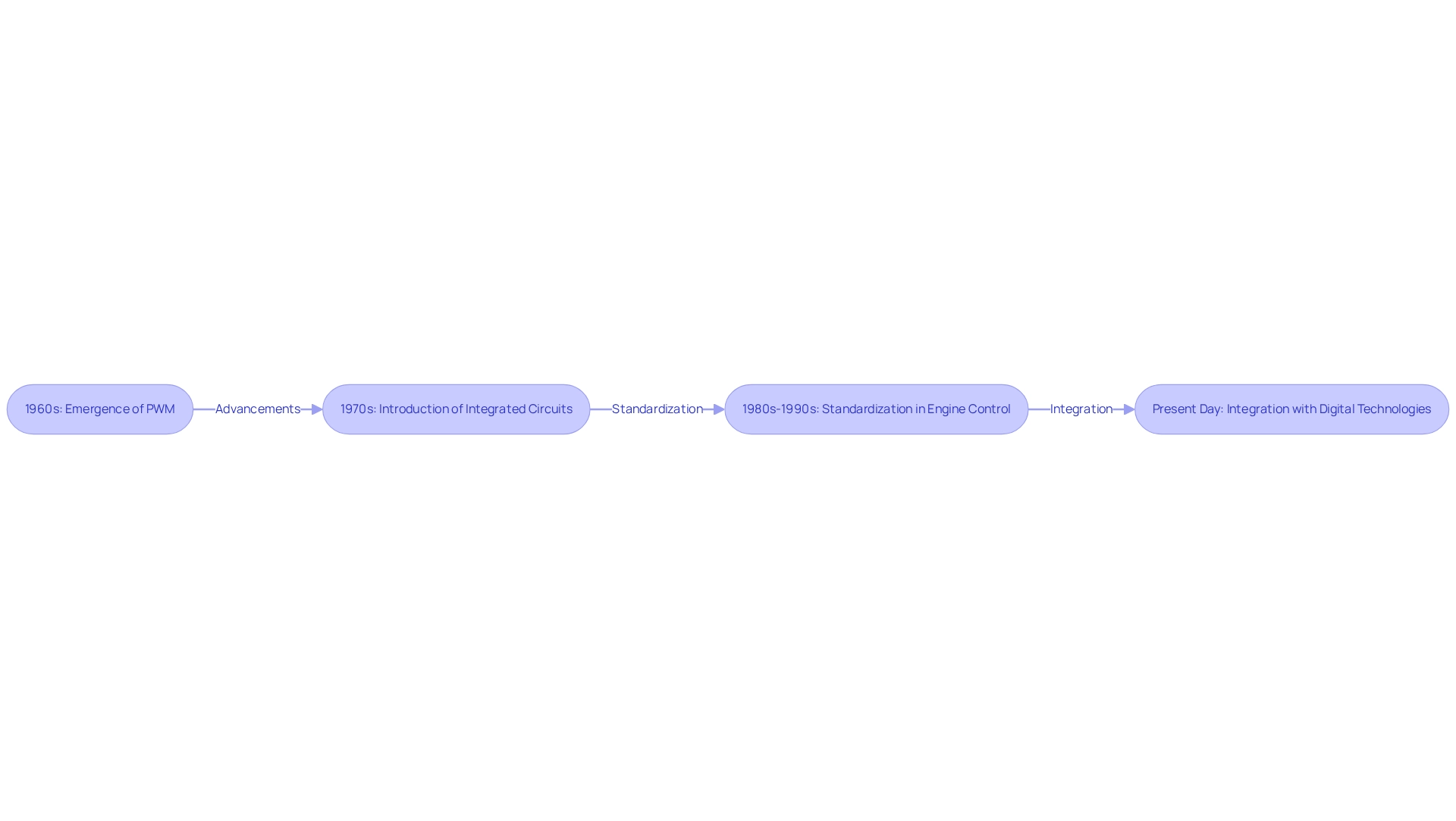
Examine Key Features and Operational Mechanisms of PWM Controllers
are characterized by several key attributes that significantly enhance their efficiency in drive applications. A primary feature is the capability to adjust the duty cycle, which dictates the proportion of time the signal is ‘on’ versus ‘off.’ This adjustment facilitates precise calibration of speed and torque, addressing the need for accuracy in performance. Additionally, PWM regulators typically operate at elevated frequencies, which not only reduces audible noise but also improves the smoothness of operation, thereby enhancing user experience.
Another notable characteristic is the integration of , such as encoders, which provide real-time performance data. This capability allows for to the , ensuring optimal operation under varying conditions. Furthermore, modern PWM devices may incorporate , including thermal protection, overcurrent protection, and programmable settings. These features contribute to the versatility of the across various applications. Collectively, these attributes and reliability of PWM motor controller drive systems, particularly in challenging environments, showcasing their critical role in modern engineering solutions.
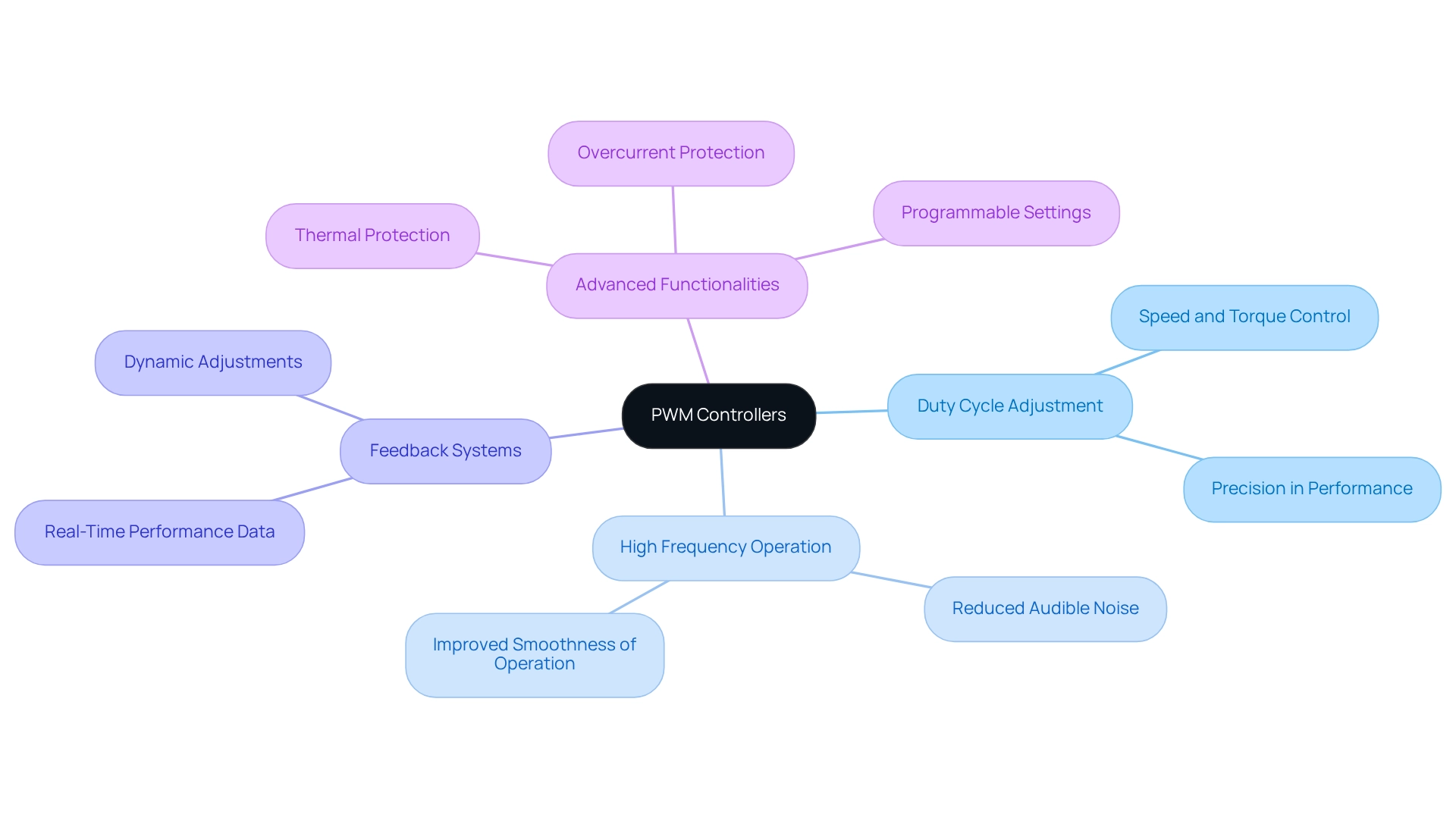
Explore Applications and Benefits of PWM Motor Controllers in Engineering
are employed across a diverse range of applications, including robotics, automotive, , and consumer electronics. In robotics, of engine velocity and positioning, which is essential for tasks such as robotic arm movement and autonomous navigation. In the automotive sector, PWM technology plays a critical role in electric vehicles, enabling effective performance control that aids in energy conservation and extends battery life. Furthermore, HVAC systems leverage PWM devices to regulate fan speeds, thereby enhancing and occupant comfort.
The advantages of utilizing are significant: they offer increased energy efficiency, reduced heat generation, and a longer lifespan for devices due to minimized stress on components. Additionally, the enables smoother operation and improved responsiveness, establishing itself as the preferred choice for engineers seeking reliable and effective motor control solutions. By integrating PWM systems, industries can achieve enhanced performance and operational efficiency.
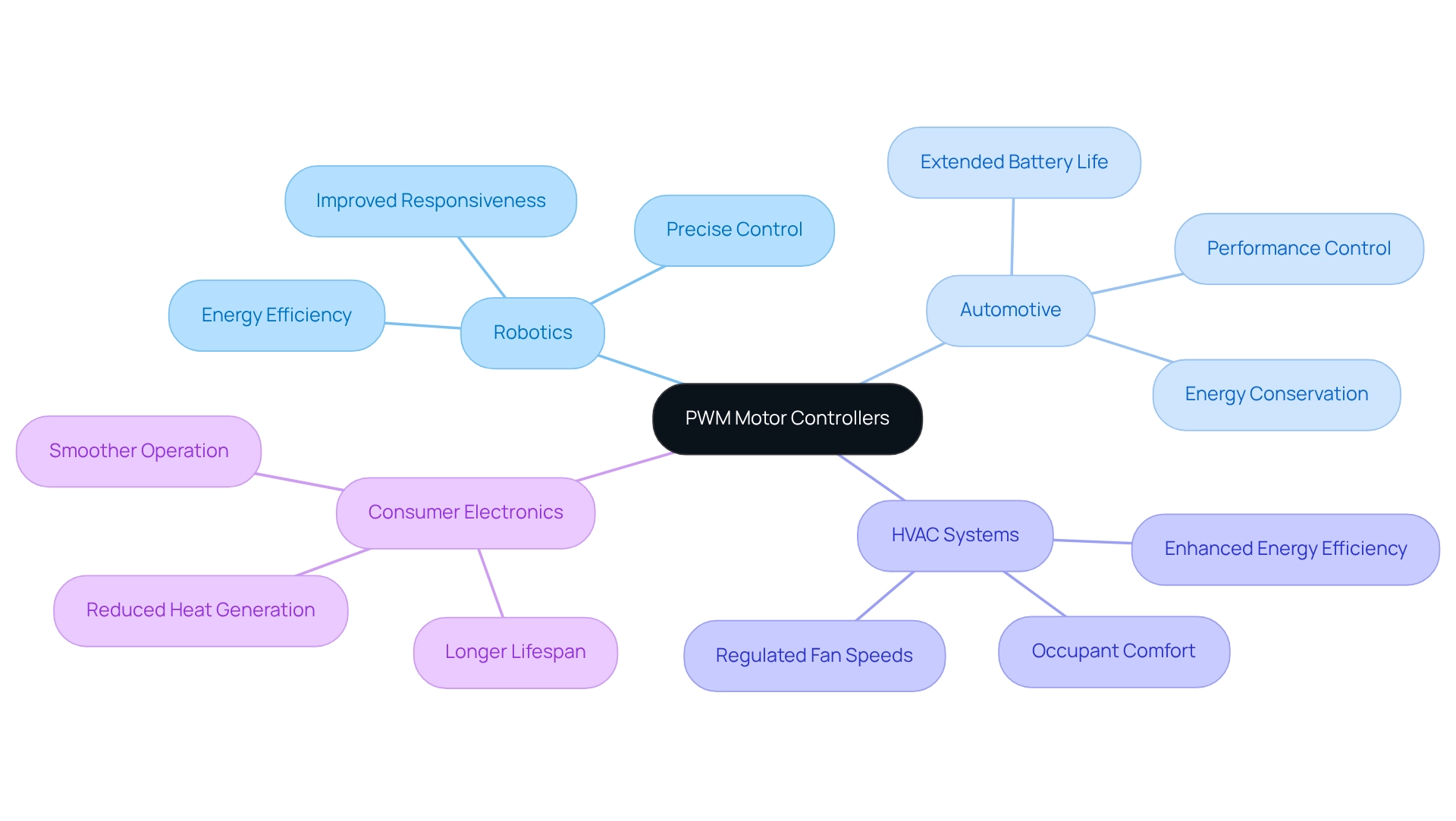
Conclusion
The exploration of Pulse Width Modulation (PWM) motor controllers reveals their vital role in modern engineering and technology. By precisely regulating the speed and torque of electric motors, PWM controllers have evolved from basic control methods into sophisticated devices that integrate advanced digital processing and feedback systems. This evolution not only highlights the historical advancements in PWM technology but also underscores its relevance in today’s automation landscape.
Key features such as adjustable duty cycles, high-frequency operation, and integrated feedback mechanisms significantly enhance the performance and reliability of PWM controllers. These attributes render them indispensable across a variety of applications, from robotics and automotive systems to HVAC and consumer electronics. The efficiency, energy savings, and improved motor lifespan associated with PWM technology further solidify its position as a preferred solution for engineers.
In summary, as industries continue to innovate and demand greater efficiency, PWM motor controllers emerge as essential components that drive performance and sustainability. Their ability to adapt to diverse applications while providing precise control exemplifies the ongoing evolution of motor control technology, ensuring that PWM remains at the forefront of engineering advancements in the years to come.
Frequently Asked Questions
What is the main function of Pulse Width Modulation (PWM) motor controllers?
PWM motor controllers manage both velocity and torque in electric machines by adjusting the width of pulses within a digital signal.
How do PWM motor controllers achieve control over operational speed?
They rapidly toggle the power supply on and off, creating a precise sequence of pulses. By varying the length of these pulses, known as the duty cycle, they can finely tune the average power delivered to the device.
Why is the duty cycle important in PWM motor controllers?
The duty cycle determines the length of the pulses, which directly affects the average power supplied to the device, allowing for meticulous control over its operational speed.
In which types of devices are PWM motor controllers particularly effective?
PWM motor controllers are particularly effective for DC devices, where the speed is directly proportional to the applied voltage.
What are some common applications of PWM motor controller technology?
PWM motor controllers are widely adopted in various applications, including robotics and automotive systems, due to their efficiency and simplicity in managing functional controls.

